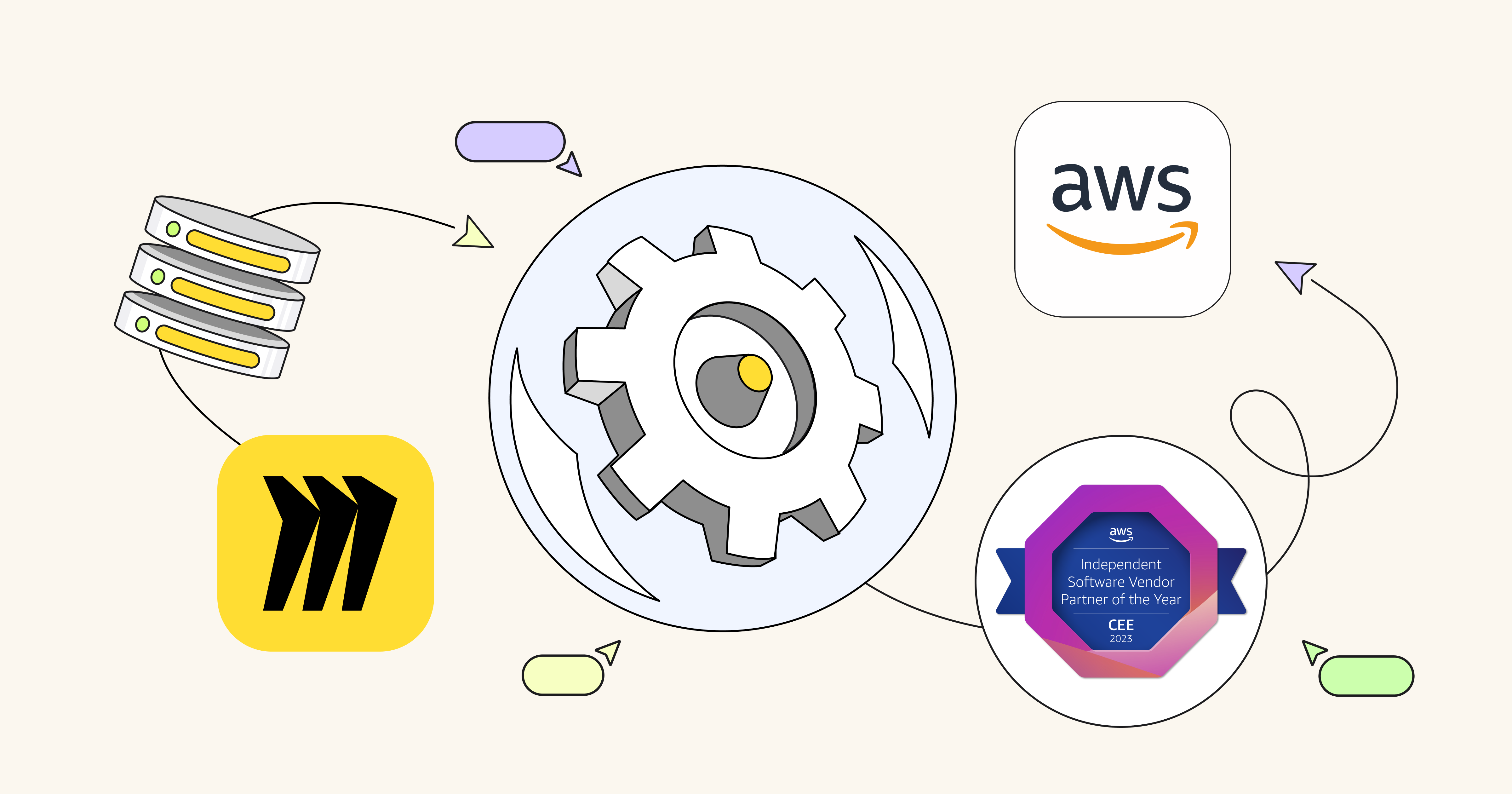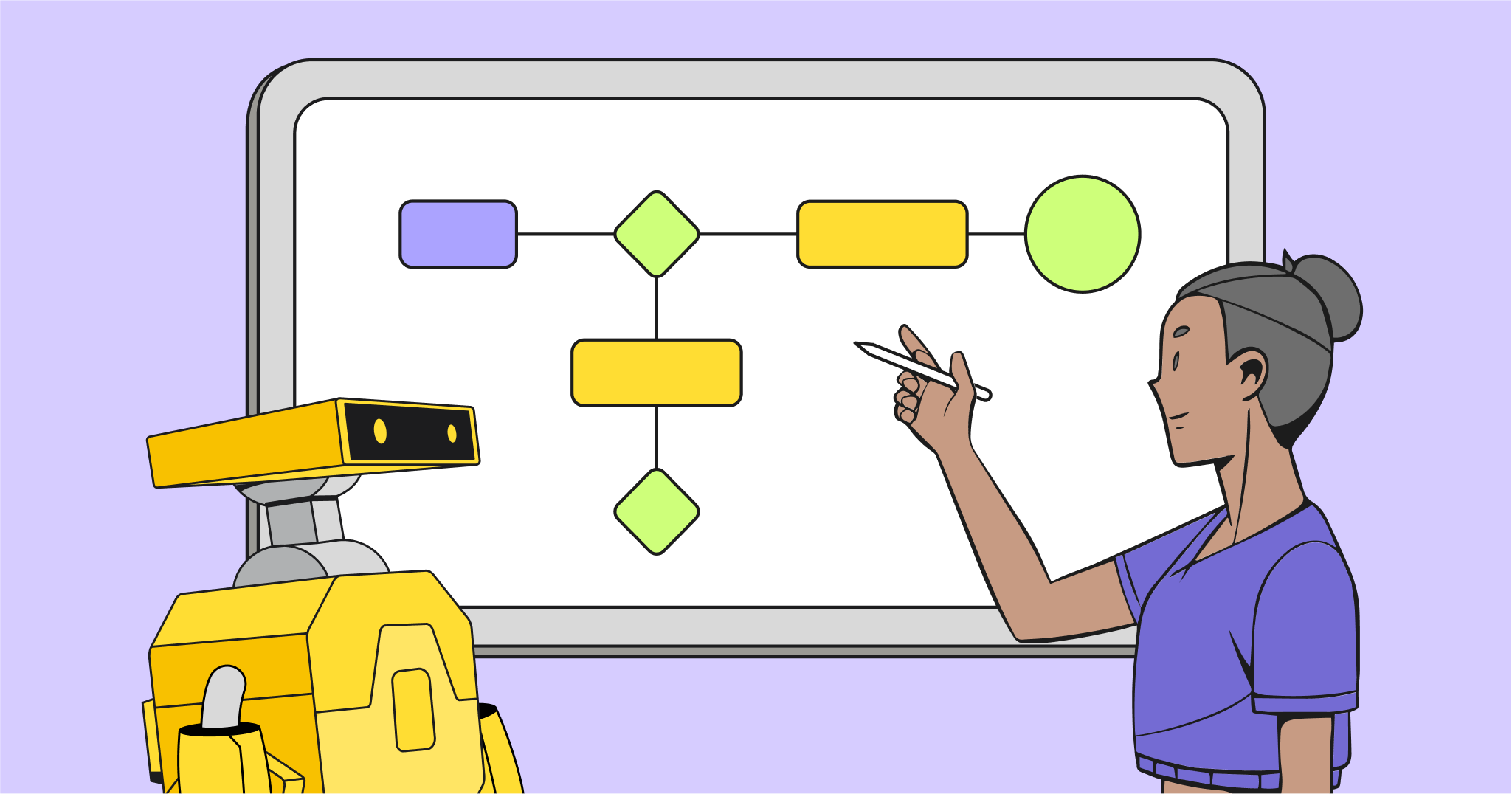Centrica has been keeping the lights on at UK homes since the industrial revolution. But its challenge today is keeping pace with the technological revolution. Customers may still value a visit from an engineer, but they also want faster, easier, and better ways to solve their day-to-day energy issues.
Delivering these solutions is the job of Centrica’s internal technology team, whose primary focus is increasing the speed with which Centrica delivers innovative products by creating repeatable and scalable processes.
By putting Miro at the heart of their cloud-based projects, Centrica was able to:
- Increase the speed of decision making by sharing knowledge in a single Miro board rather than multiple repositories
- Enable rapid design and prototyping by replacing their traditional diagramming tool with Miro for technical diagramming
- Understand the cost implications of various designs using Miro’s integrated AWS cost calculator
Story highlights
- Fragmented tools: Centrica’s business units have their own tools and ways of working, leading to slow and frustrating communication and collaboration on complex projects
- Unified platform: Miro replaced multiple fragmented tools with a single workspace for stand-ups, technical diagramming, and cost calculations
- Accelerated delivery: With improved access, knowledge sharing and collaboration, Centrica can now deliver products faster with a repeatable blueprint for innovation
The problem: Legacy technology slowed collaboration
The biggest challenge within Centrica’s engineering teams was the fragmentation of tools across the product delivery lifecycle. This made it difficult to maintain an easily accessible and unified view of their work. Teams would brainstorm an idea in one place, design a solution in another, and share prototypes somewhere else entirely. It was like trying to work on the same jigsaw puzzle in three different places at the same time.
Even something as simple as gathering feedback on a design became an arduous task. Team members could find themselves trawling through multiple repositories, downloading a diagramming file, leaving a comment, re-versioning it, and uploading it again, and then crossing their fingers that designs hadn’t been changed in the meantime. Each new version was created in a silo with little communication or coordination between designers, developers and stakeholders.
“Back then, designs weren’t stored in one place where everybody could see and work on them together. It wasn’t collaborative. If two people wanted to work on different aspects of the same diagram at the same time, it just wasn’t possible,”
Titu Joseph Rajan, Head of Integration, Centrica
This uneven collaboration and slow decision-making hindered innovation. With winter around the corner and the technology team racing to launch a new customer facing platform enabling customers to perform guided fixes to their boilers, it was clear that drastic changes were needed to keep up with the demands of the business and deliver timely solutions.
The solution: A single workspace to bring people and prototypes together
Initially, Titu Joseph Rajan, Centrica’s Head of Integration, viewed Miro as a great tool for team-day exercises like brainstorming or high-level ideation. However, when he realized Miro was also deeply integrated into AWS and Microsoft, a lightbulb went off, and they started using it for technical design and diagramming.
With Miro, his team no longer needed to open multiple tools or browser windows to find what they were looking for. Instead, they could access everything they needed – from technical designs to architecture diagrams, data models, and more – on a single Miro board.
This led to a dramatic increase in developer efficiency. “There’s a noticeable difference in how quickly you can access the data,” says Rajan. “But it’s not just about accessing that information today. One year from now, if you want to see how you built everything, it’s still sitting in a Miro board for you to edit if needed. You can go back to the reasons you did something, to the ‘why’.”
This has seen Miro become the primary tool for navigating and collaborating across different projects and resources, facilitating seamless teamwork and efficient product delivery.
The impact: Accelerating value delivery
Centrica has been tapping the full power of Miro for just over two years, and has experienced exponential improvements in knowledge sharing, decision making and prototyping.
“What Miro gives us is a repeatable, scalable process for innovation that we can use in all our future programs. Without it, we’d be moving much slower and introducing more risk into our end-to-end delivery. This speed is absolutely important for us, and it can benefit any organization looking to improve their workflows and deliver better results, faster,” said Rajan.
This newfound speed has been crucial for Centrica, particularly in a competitive energy market where responsiveness is key. By harnessing Miro’s capabilities, Centrica is not only streamlining current projects but also laying the groundwork for future innovations that can drive greater customer satisfaction and operational efficiency.
Miro for technical diagramming
Rajan’s team has built a new service that allows customers to diagnose and perform self-guided fixes to their boilers, reducing the need for engineer visits. This platform has already reduced pressure on field engineering resources by 2% since its launch in January 2025, and currently supports solutions for 35% of boiler types.
Once all the commonly used boiler models are included and the feature is made available across all customer-facing channels, it is projected to avoid approximately 60,000 engineer visits annually – a significant saving, considering British Gas conducts nearly 2 million engineer repair visits each year.
In addition, enhanced data collection enables large-scale pre-diagnosis of issues, improving engineers’ ability to resolve problems on the first visit. This not only boosts first-time fix rates but also increases engineer availability, allowing them to focus on more complex and urgent cases that require immediate expert help, ultimately reducing operational costs and improving customer experience.
The service is underpinned by a Decision Engine Platform (DEP), which is a decision tree implementation utilizing a distributed systems architecture based on AWS Serverless services such as AWS Lambda, AWS API Gateway, and AWS DynamoDB.
Rajan’s team used a single Miro board with multiple frames to document various aspects of the implementation lifecycle including ideation and brainstorming, cloud architecture, database modelling, delivery plans, and sprints. This approach facilitated efficient collaboration, kept the team focused on delivering value to customers, and ensured that milestones were tracked while providing a centralised reference for cloud architecture and designs.
Initially, Rajan’s team was using Draw.io to recreate the technical diagrams but these have now been imported into Miro. “If it’s on a collaborative board, more people can contribute to the same problem,” he explains. “And Miro is much easier – you’re not spending time actually importing and exporting, opening it up, etc. It’s all within a single space.”
The team started documenting all their cloud architecture diagrams in Miro. They needed to assess whether to use a SQL database like AWS RDS PostgreSQL or a NoSQL database like AWS DynamoDB as their data layer. The team used Miro AWS shape packs to document the various cloud architecture designs as well as collaborate on the pros and cons of either approach, which helped with faster decision making. They were able to document the database entity relationship diagrams on the same Miro board.
“We worked on various iterations of the database schema,” explains Rajan, “and we also built a swim lane to map the flow of data across various systems and platforms within the end to end architecture. This helped us determine the effort required to build the MVP.”
Once they landed on the NoSQL option, the diagrams quickly became more elaborate. But even as the DEP implementation progressed, all the work remained centralized in one place. Once they’d polished the database design, they had more than enough to kick off the implementation. They put the final design artifacts on another frame on the same board, then started putting together the delivery roadmap across each of their sprints to build an MVP product. After that, they added the next set of iterations and releases to build more features into the platform.
The fact that Rajan’s stakeholders could see all these things in one place helped them link design decisions to business impact, which made the workflow very efficient and transparent.
The end result is speed to value. Being able to prototype quickly, extract code and deploy into an environment in AWS improves the speed at which Centrica can get prototypes out to customers.
Miro for cost calculation
Calculating cloud costs is a crucial part of the decision-making process for the platform. Initially, the team used AWS’s cost calculator, which required visiting a separate website to configure different AWS services and estimate usage. This approach meant the final cost estimates were not integrated with the designs.
Switching to Miro’s integrated AWS cost calculator eliminated the need for separate inputs or edits. Now, any changes to the diagram automatically update the costs in real time.
“It’s fantastic that the cost is integrated within the diagrams themselves. It provides additional context and helps us figure out what attributes to consider before we decide on a final option.”
Titu Joseph Rajan, Head of Integration, Centrica
The tool is extremely collaborative, making it easily accessible to anyone working on the platform. By embedding cost information directly within the design, it eliminates the need for context switching and opening separate links or web pages. Most importantly, it ensures that the cost estimate remains in sync with the actual prototype and provides a history of why Rajan’s team chose certain options, ensuring transparency and clarity in their decisions.
This integration makes decision making faster and more informed, leading to faster and more efficient delivery of valuable and impactful products and features to customers.
Miro for cloud optimization
The Decision Engine Platform is just one of many platforms that Rajan’s team hosts on AWS. Sometimes, multiple platforms are hosted within a single AWS account, which is why they are particularly excited about Miro’s CloudView tool. This tool pulls all the AWS services deployed within the account directly into Miro. It also provides options to select specific services or filter by tags, allowing Rajan’s team to narrow down all services connected to a given platform.
According to Rajan, this feature is incredibly useful for reviewing and improving the service after launch. Since AWS CloudView offers a view of the architecture design post-implementation, the team can now compare the original design with the actual implementation on the same Miro board. This capability helps the team discuss specific sections of the architecture collaboratively, and iteratively improve and optimize the service over time.
Looking ahead
With the success of the Decision Engine Platform, Miro has become an integral part of Centrica’s technology workflow, instilling confidence in their teams about the direction they’re heading.
“I can confidently describe Miro as being the go-to collaboration tool that engineering teams within Centrica can use to speed up delivery and efficiency.”
Alan Fairhurst, Enterprise Agile Coach, Centrica
Across Centrica, Miro has gained significant traction, with nearly 3,000 users utilizing the platform for everything from product management and project planning to agile team management, process design, and technical solution design.
The intuitive interface has been particularly valuable for Centrica’s hybrid workforce, allowing teams to quickly set up boards to brainstorm, design, and implement solutions regardless of location. As the company continues to evolve its digital offerings, new capabilities like Blueprints and AI-driven boards and templates are further enhancing team capabilities.
“What started as a tool for remote collaboration has transformed into the foundation of how we innovate,” says Alan Fairhurst, Centrica’s Enterprise Agile Coach. “The speed and transparency Miro brings to our technical processes mean we can respond to market demands faster than ever before—which is exactly what our customers expect from us today.”
As Centrica continues its digital transformation journey, Miro’s collaborative platform will remain a key enabler to deliver innovative solutions that meet the evolving needs of their customers.




